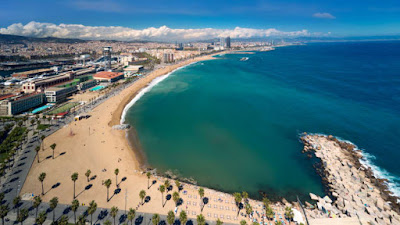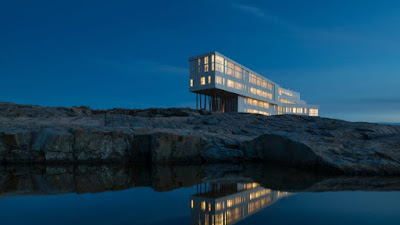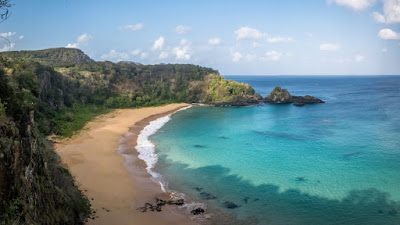A guide to Barcelona's beaches
Even without its beaches, Barcelona would be one of Europe's coolest destinations thanks to its groundbreaking food scene, unique architecture and legendary nightlife.
But the cherry on the sundae is the three-mile strip of nearly continuous golden sand, which is so wired into its heart that it's like the entire city's backyard.
Much of the seafront buzzes with a carnival atmosphere year-round, with hawkers tiptoeing around sunbathers to sell cold cans of beer, beach blankets and chintzy trinkets.
Along the pedestrian promenade that runs the length of the waterfront, musicians, street performers and sand sculptors compete for tips among a constant stream of strolling tourists and locals to this part of Spain.
Weaving around them are bikes, Segways, skateboards, motorized scooters, rickshaws, rollerbladers and every other wheeled contraption imaginable.
The most popular beaches are only a 15-minute walk from the tangled alleys of Barcelona's oldest area, and the quieter ones to the north are easily accessible by public transit.
Meanwhile, there's something for every type of beachgoer, from the partying weekender to the family man to the bronzed sunbather looking to relax with a book.
Here's your guide on how to find your kind of beach in the capital of Catalonia:
Barceloneta and Sant Miguel
No matter which beach you choose, the Mediterranean sun shines down about 300 days a year, so you'll always have at least some company. The beaches really start to come alive in April, when dozens of chiringuitos, or beach bars, sprout up along the coastline, and vendors begin renting out umbrellas, lounge chairs and sports equipment.
Another bonus: A public bathroom or outdoor shower is never that far away.
Barceloneta Beach is at the heart of it all, and here's where to come if you're in the mood for a party.
Walk from its namesake metro stop down Passeig Joan de Borbo, past the superyachts docked in the marina, and you'll arrive at Sant Miguel. It won't take long to notice the upbeat music playing among sunburned tourists who've spent a bit too much time flagging down vendors for watered-down mojitos.
Barceloneta is to the north of the 30-foot stack of steel and glass cubes, a statue called The Wounded Shooting Star.
Both beaches are part of one continuous strip, but the top half takes its name from the adjacent neighborhood. It's traditionally been a fishing quarter but now struggles with an overflow of short-term rentals, which explains both the crowds and the blue and yellow flags signaling neighborhood pride that dangle from almost half the balconies.
That bit of tension, however, is hardly evident out on the beach, which maintains a laid-back vibe despite the tourist throng.
The action continues well into the night, when groups of young locals come for an affordable night of hanging out under the floodlights strumming guitars and drinking beers.
Sant Sebastía
This beach is close to the center of action -- just to the south of Barceloneta near the sail-shaped W Hotel -- but it's generally quiet enough to still hear the light shoosh of small, lapping waves over the bicycle bells ringing on the promenade.
Sant Sebastía is one of the oldest swimming areas in the city, and the Club Natació here began hosting dips for the elite in the early 20th century. That history, plus the convenience to the center of town, draws an older crowd and families in the morning. By the time the sun hits its afternoon peak, the crowd gives way to a more boisterous gathering.
The beach is also home to the Pukas Surf School, evidence that on days after a storm, surfers come to vie for modest waves. On calmer days paddleboarders and windsurfers dot the horizon. (Avenida Zurriola 24, 20002 San Sebastian; +34 943 320 068)
Be aware that it's clothing-optional, so you'll see your fair share of nude sunbathers who don't care at all about hundreds of people walking within ogling distance.
In fact, Sant Sebastía has always been liberal and caused quite a stir when it became the first bathing area in the city to allow men and women to swim together.
Somorrostro
This area sits between the outdoor exercise pier that marks the north end of Barceloneta and the twin towers of the Port Olympic. Until the mid-20th century Sorromostro hosted a shantytown that housed up to 15,000 people, but now it's home to the coastline's fanciest restaurants.
A fashionable crowd lounges on plush sun chairs underneath Frank Gehry's lacy, bronze fish statue, nibbling elevated takes on traditional tapas and sipping sangria (try it with sparkling cava instead of wine). Just make sure to put a shirt and shoes back on before trying to get in.
Nova Icaria and Bogatell
It's hard to believe that these beaches were an industrial wasteland before the city tore up seaside train tracks ahead of the 1992 Olympics.
Sand was imported from Egypt, and a center of beach sports was born.



